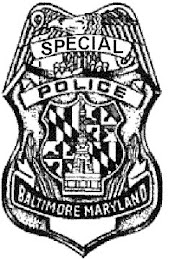 (Chris Ammann/Examiner)
(Chris Ammann/Examiner)Gov. Martin O’Malley pins a medal on of
Staff Sgt. Christopher Demski, of Essex, at
the Parkville National Guard Armory.
Police prepare to go to war
BALTIMORE -
Minutes before boarding a bus on the first leg of a journey that will ultimately take him to the battlefronts of Iraq, 1st Sgt. James Saunders seemed more composed than some of his fellow soldiers — albeit slightly.
A Baltimore County police officer, Saunders puts his life on the line every day.
“It gives you an edge,” Saunders said. “When you’re on the street, you can sense when things are going bad. It makes you alert.”
Saunders was one of five Baltimore County officers and 130 members of the Maryland National Guard leaving Thursday for three months of combat training and a subsequent nine-month deployment to Iraq. The troops are from the 290th Military Police Company, based at the Parkville Armory, and part of the largest mobilization of Maryland guardsmen since World War II.
The group includes about 50 local police officers, sheriff’s deputies and state troopers. Civilian soldiers attributed the overlap to similarities in combat training and crime fighting, such as the physical demands, familiarity with weapons and an affinity for law enforcement.
In addition to the five who left Thursday, a dozen Baltimore County officers are already deployed. Anne Arundel County’s sheriff’s office sent one deputy, and the county’s police department lost one officer Thursday — Staff Sgt. Brian Daughters, on his third deployment.
Howard County Police have lost three officers, and six of 14 state troopers currently deployed are in the Maryland National Guard, officials said. Baltimore City has 22 officers serving overseas.
Gov. Martin O’Malley attended a tearful deployment ceremony at the Parkville Armory, where volunteer Dorothy Healy knelt in a corner, clutching an American flag and weeping. Unlike many family members there to see loved ones off, she knew none of the departing soldiers.
Her daughter, a member of Maryland’s National Guard, arrived home safely after leaving for Iraq two years ago.
“I wasn’t able to see her off, and I regretted it all this time,” Healy said. “So I’m going to go every chance I can now, and by the looks of it, I’ll have opportunities for awhile longer.”
Examiner
























































